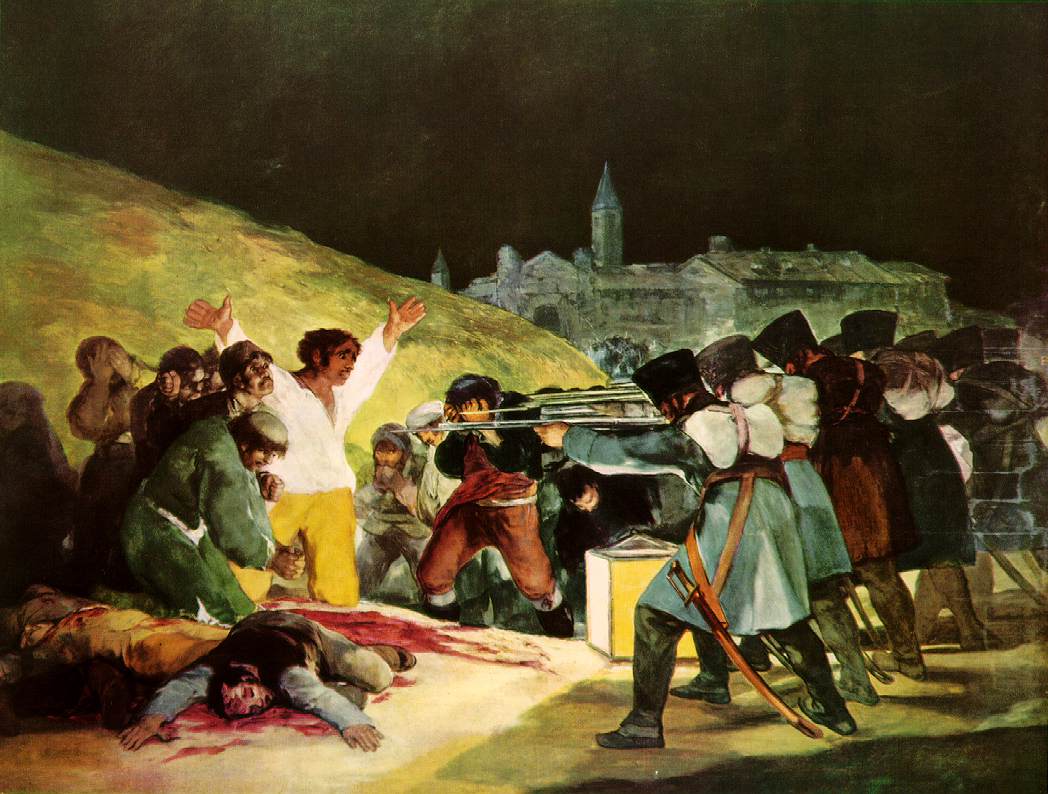 | ||
| Jacques Louis-David. Oath of the Horatii. 1784-1785 |
Krissia Keck
To initially prepare ourselves for the
crazy world of the history of art movements, we must agree on some
things. Art movements behave in an “action-reaction” pattern. It
generally starts with an artist trying to achieve complete and utter
perfection (much to the annoyance of those of us who cannot draw a
single portrait successfully). David is our a prime example. He was
inspired by, and followed all the rules of Classicism. But then of
course, a couple of "punks" come around, decide that they don't like
the way things are going, and that they are no longer going to follow
any of these unwritten rules. They are going to do things their way,
and follow their own rules, which later becomes the set of rules that
the next generations' "punks" are going to have to break. And there you
have the beginning of every art movement ever. (Or almost)
Neoclassicism emerged right after the
“fall” of the Rococo movement. Pretty, frilly, light-hearted
things are great and all, but they somehow fail to depict and embody
the events taking place in France in the 18th Century.
They actually mirror to an extent, the political state of France. The
decadence and excess of the aristocracy, eventually led to the
French Revolution. Artists without a doubt, were endlessly affected
by the political events that surrounded them.
In Oath of the Horatii, not only does
David make use of classical ideals such as mathematical proportions,
perfect lines, restrained use of color, depth of field, and Roman
architecture, but he also uses the grand theme to his advantage.
Being a supporter of the Revolution, he chooses to depict a theme
that will install the revolutionary spirit amongst his people. The
painting illustrates the story of three men taking an oath against
their enemies. The only minor problem: the women were related to the
enemy family in different ways, so they were all going to lose
someone near to them. The best part? The painting was commissioned by
the royal government. David's painting was a discreet call to arms.
He used the seriousness and power of the Neoclassicism movement to
deliver a dose of heroism and call for action to the people of
France.
 |
| Francisco Goya. The Third of May. 1808. |
Fast-forward a couple of years, and we
notice Neoclassicism making way for Romanticism. As previously
mentioned, artists threw the rulebooks away, and began painting
whatever and whichever way they wanted. Perfect proportions? Nope.
Mathematical calculations? Definitely not. This time around, artists
began to paint contemporary subjects that appealed to them. Instead
of painting a classical story with the hopes of invoking some feeling
with the viewers, Romantic artists produced paintings of actual
events so that people could react however they chose to.
Francisco Goya had one foot in France,
and one foot in Spain. He was witness to the horrors of war, and
became disillusioned with the governing forces in Spain. In The Third
of May, Goya depicts the events that actually happened on May 3rd
in Spain, when the French slaughtered hundreds of innocent civilians
because a French soldier was shot the night before in the same city.
The composition is not perfectly measured out. It has no distinct
depth of field. The bodies are not proportionate, which can be
clearly seen on the main figure, the man wearing yellow and white. He
strategically uses directed lighting to illuminate the defenseless
man in he middle of the canvas. His brushstrokes are expressive, and
the overall mood is very dramatic. The faces of the soldiers cannot
be seen, but we are shown the faces of the victims in the painting,
in an attempt to empathize with the people. He uses bright colors to reinforce the drama happening the center of the piece.
Ultimately, Romanticism prevails (at least for a couple more years). Neoclassical artists working on commissions sought to make their patrons satisfied, by painting grand, classical themes. On the other hand, Romantic artists began to paint for their own sake, and for the first time, artists started choosing the content of their paintings, using the canvas to express their inner reactions to the events happening around them.
Works Cited:
Eisenman, Stephen, and Thomas E. Crow. Nineteenth Century Art: A Critical History. London: Thames and Hudson, 1994.
Works Cited:
Eisenman, Stephen, and Thomas E. Crow. Nineteenth Century Art: A Critical History. London: Thames and Hudson, 1994.
No comments:
Post a Comment